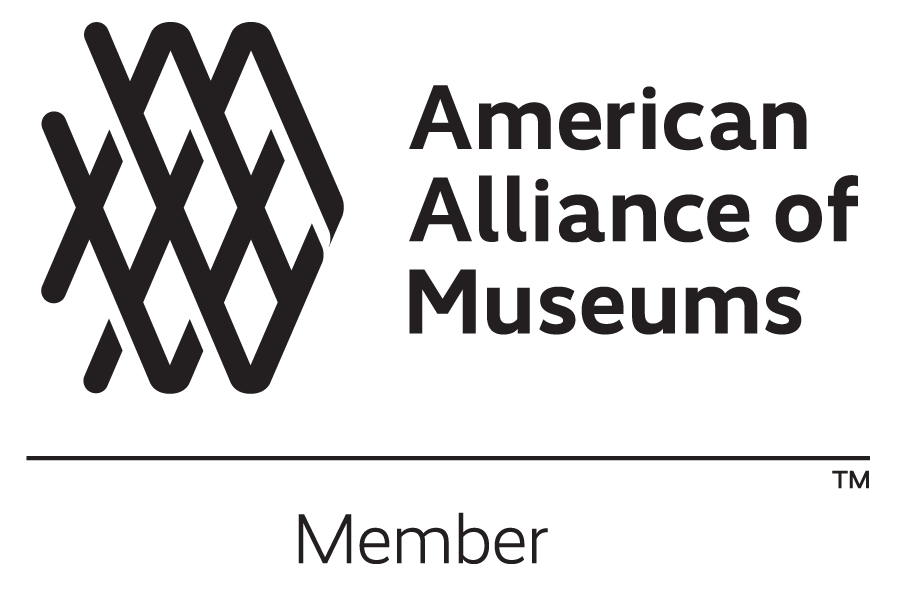INTRODUCTION
The Continental Congress ordered the formation of an army on June 14, 1775. This order responded to the need for organized American defenses as tensions with Great Britain escalated. The Continental Army was organized into regiments which were formed by close-knit communities that fought together. Each regiment carried a flag with images that held great shared significance for the group.
Regiments always carried their flags into combat on foot and horseback. Amid the smoke and noise of a heated battle, flags were field signs that identified the line of battle and who fought for what side. A colorful flag and distinctive drumbeat were the easiest ways to find your regiment quickly. Soldiers were transferred between regiments frequently throughout the war. A unique flag made one’s assigned regiment easy to remember.
General George Washington urged regiments to craft their group identity by designing their own flags. Over time, as regiments succeeded in battle, flags became central objects of loyalty and pride for soldiers. In a political cause like the fight for independence from Great Britain, regimental flags were powerful symbols that expressed hints of a new national identity.
UNDERSTANDING REGIMENTAL FLAG DESIGN
Modern flags originated in medieval Europe from heraldry designs, like those you might see on family crests and coats of arms. Symbols like the fleur-de-lis were used for centuries and therefore easily recognizable. But colonists crafting their own designs used a distinctive mix of Old and New World imagery.
Two conventions that carried over from European flags are the corner canton and Latin mottos. The canton is the spot in the top left corner of a flag. It was considered the most important spot on a flag because it is the only place you can see when the wind is not blowing. Symbols in the canton, like Great Britain’s Union Jack, often identify a group’s connection to a larger entity, like the British Empire.
Colonists decorated their flags with images of what was around them, like native plants and animals or weapons. Other common images included allegorical people and objects, English mottos, and religious symbols. Color schemes were predominantly red, white, and blue thanks to the influence of the British Empire. The histories of these flags and their designs can be shrouded in lore and often rely on conjecture to tell their stories.
HORNET'S NEST FLAG
silk
69 x 49 inches
Sons of the Revolution in the State of New York
The city of Mecklenburg, North Carolina, ratified its Declaration of Independence on May 20, 1775. This flag was created shortly after. It takes British General Cornwallis’ words literally, who described the city as a “hornet’s nest of Rebellion” after the British Army was expelled from Mecklenberg. In ancient Greece, it was believed a hornet’s sting caused madness or death.
SECOND NEW HAMPSHIRE REGIMENT FLAG
silk
69 x 53 inches
Sons of the Revolution in the State of New York, gift of William Hale Kirby
This flag was first raised under the command of Brigadier General Enoch Poor in 1775. The gold interlaced rings bear the name of the 13 colonies, symbolizing the strength, power, and unity of the new nation. Inside the sunburst, one of the earliest Union mottos declares, “WE ARE ONE.”
CONSTITUTIONAL FLAG
silk
63 x 50 inches
Sons of the Revolution in the State of New York
This flag commemorates the signing of the Constitution of the United States. It flew as part of the march-order preceding the Constitution during the Grand Federal Procession Parade in Philadelphia on Independence Day 1788. The flag was part of a series of flags denoting important events leading to the Constitution’s ratification.
REBELLIOUS STRIPES FLAG
nylon
75 x 50 inches
Sons of the Revolution in the State of New York, gift of Edmund Franklin Romig III, 1996
The Sons of Liberty adopted this flag in 1767. The stripes represent delegates from each of the nine colonies who attended the Stamp Act Congress in 1765. Curiously, this version is overlaid with Benjamin Franklin’s famous illustration of a rattlesnake. The rattlesnake, indigenous to the United States, was one of the earliest symbols of American identity. Colonists saw themselves like the resilient reptile, which only defends itself when provoked.
BATTLE OF WHITE PLAINS FLAG
nylon
62 x 52 inches
Sons of the Revolution in the State of New York
This flag was carried by a New York regiment during the Battle of White Plains in October 1776. The red cap dates back to ancient Rome, where it was worn by emancipated slaves. During the Revolution, the red Liberty Cap was a symbol of the right to independence. It was often carried on a staff in public rallies as shown here.
WASHINGTON'S CRUISERS FLAG
nylon
72 x 48 inches
Sons of the Revolution in the State of New York, gift of Scott M. Dwyer, 2021
Colonel Joseph Reed designed this flag to fly under General Washington’s naval cruisers in 1775. The pine tree was an essential commodity in the northeast colonies because it provided lumber. The Sons of Liberty secretly met under what they called ‘liberty trees’, and the pine tree became a symbol of independence throughout the Revolution.
PULASKI LEGION BANNER
silk
68 x 52.5 inches
Sons of the Revolution in the State of New York, gift of Mr. and Mrs. T. Arthur Ball Jr. in memory of John David Ball, 1977
Brigadier General Casimir Pulaski presented this banner to his Legion in 1778. The cavalry Legion was one of the most successful under his command. Inscribed with the Latin phrase, “No Other Governs,” the crimson flag is decorated with exploding hand grenades in each corner. The eye of Providence represents God’s watchfulness over the Legion.
THIRD NEW YORK REGIMENT
nylon
75.5 x 50 inches
Sons of the Revolution in the State of New York, gift in honor of Judge James R. Grayshaw, 2015
This flag was presented by Colonel Peter Gansevoort to the regiment in 1779. Lady Liberty and Lady Justice flank the shield, representing the colony of New York. Lady Liberty presents a Liberty cap while treading on the crown of the British monarchy. Lady Justice, blindfolded holds scales and a sword, representing the swift and fair application of justice.
FIRST RHODE ISLAND REGIMENT
silk
68 x 51 inches
Sons of the Revolution in the State of New York
In 1778, the Rhode Island Assembly opened recruitment to free or enslaved Blacks to serve in companies within the regiment. The First Rhode Island Regiment was the only one to have segregated companies. The 13 stars symbolize colonial unity. The scrollwork, instead of a symbolic image, reflects the challenge of the regiment’s frequent reorganization.
BUCKS OF AMERICA FLAG
nylon
72 x 49 inches
Sons of the Revolution in the State of New York
From Massachusetts, the Bucks were the only all-Black militia company during the Revolutionary War. They were assigned to protect merchant property in Boston. Presented by Governor John Hancock in 1785, the flag features the buck as a symbol of power and protection. Underneath, the abbreviation “J.G.W.H.” refers to John Hancock and his son, George Washington Hancock.
COMMANDER-IN-CHIEF'S GUARD FLAG
silk
70 x 50 inches
Sons of the Revolution in the State of New York, gift of George E. Doty III, 1996
General Washington ordered a military unit in March 1776 specifically to guard the Commander-in-Chief, his headquarters, papers, and effects. It depicts a Guard accepting their flag from the Genius of Liberty, who holds up a Union shield alongside an American eagle. The Guard’s motto “CONQUER OR DIE” is found on a banner at the top.
BEDFORD MINUTEMEN STANDARD
silk
67 x 52 inches
Sons of the Revolution in the State of New York, gift of Eugene A. Gatterdam III in memory of Dr. Eugene A. Gatterdam Jr. and Ruth L. Gatterdam, 1977
This flag is one of the oldest in the Union. It was carried by the Bedford Minutemen to the Battles of Lexington and Concord in 1775. The flag depicts a medieval knight’s arm emerging from clouds brandishing a sword, representing the indomitable arm of God. The arm is surrounded by cannonballs, and a ribbon with the phrase “Conquer or Die” in Latin stretches across the flag.
EARLY STANDARDS OF THE UNION
The nation’s first official flag, the Stars and Stripes, was approved on June 14, 1777, by the Continental Congress. The flag resolution left the layout of the stars undefined, so flag-makers used many different patterns.
There is no official interpretation of the flag’s meaning, though Congressman Charles Thomson described the symbolism of the colors: “White signifies purity and innocence, Red, hardiness & valour, and Blue…signifies vigilence [sic], perseverence [sic] & justice.” Significantly, this moment marks the coming-together of a nation, from small, local groups, to a large piece of the continent.
TRUMBULL AMERICAN FLAG
nylon
75.5 x 49 inches
Sons of the Revolution in the State of New York, gift of the Barraclough family in memory of Natale Reale, 1996
This adaptation of the Stars and Stripes is attributed to John Trumbull, the second personal aide to General Washington during the war who later became a prominent painter. This flag appears in Trumbull’s 1828 painting, Surrender of Lord Cornwallis. It is unclear if this flag was present at the Battle of Yorktown in 1781, which the painting depicts.
BENNINGTON FLAG
nylon
72 x 48 inches
Sons of the Revolution in the State of New York, gift of Scott M. Dwyer, 2021
This flag purportedly originated during the Battle of Bennington in Vermont. It is one of several designs that would solidify the standard Union design, with the 13 stars and stripes each representing a colony. The 76 refers to the 1776 American Declaration of Independence from Great Britain.
GUILFORD COURTHOUSE FLAG
nylon
67.5 x 51 inches
Sons of the Revolution in the State of New York, gift of Peter Gibb Cropper Nemiroff, 1991
This flag was allegedly raised after the Battle of Guilford Courthouse in North Carolina in March 1781. The flag’s unique design features 13 blue eight-pointed stars within the expanded white canton and alternating red and blue stripes.
SERAPIS FLAG
nylon
75.5 x 47 inches
Sons of the Revolution in the State of New York, gift of George P. Morse, 1958
This flag was flown at the Battle of Flamborough in September 1779, the first Continental Navy victory during the Revolutionary War. It was raised by Captain John Paul Jones after capturing the HMS Serapis. Although it does not meet the Flag Resolution standards, it was one of the first recognizable American flags during the war.
THEN AND NOW
Images from flags took on a larger symbolic meaning and spread across material and visual culture over time. Powder horns are one type of object that shows us this. War expeditions would have likely been seen as one of the most significant moments in a soldier’s life, and their powder horn can give us a look into what their owners felt were important. Being that many soldiers chose to reproduce the symbols from or illustrations of the flags, we can see that they must have been important. Soldiers saw themselves as having the same qualities inherent to that image. We can imagine how people may have felt about these regimental and early national flags by recalling how we feel about our own country’s flag, or others we use to identify ourselves.
POWDER HORNS
Unknown maker, c. 1785
animal horn (primary material)
1919.05.002
Fraunces Tavern Museum, gift of Col. Dewitt C. Falls
Unknown maker, c. 1710
animal horn (primary material)
1919.05.001
Fraunces Tavern Museum, gift of Col. Dewitt C. Falls
Many soldiers took up engraving powder horns while waiting for orders. They carved horns with engravers, needles, or small knives, then rubbed with grease, wax, or ash to make the linework pop against the light color of the horn. These two intricately carved horns show emblems like Great Britain’s coat of arms, maps and illustrations of forts and cities.
FLAG OF THE UNITED STATES OF AMERICA
nylon
72 x 48 inches
Sons of the Revolution in the State of New York, gift of Christian C. Wilcox and Patricia A. Wilcox in memory of Charles C. Wilcox III, 2012
The national flag of the United States consists of 50 white stars on a blue canton, representing the states of the union, with 13 alternating stripes, for the original 13 colonies. As the country grew, the flag went through 27 iterations from 1777 to 1960 as flag proportions and colors were standardized and new states were added to the Union. In 1960, the flag was updated with the addition of a new star after the admission of Hawaii.
SONS OF THE REVOLUTION IN THE STATE OF NEW YORK COLORGUARD FLAG
nylon
73.5 x 45.5 inches
Sons of the Revolution in the State of New York, gift of Peter Gibb Cropper Nemiroff, 1986
This flag is used by SRNY’s Color Guard at commemorative and fellowship events. The buff and dark blue stripes match the colors of the Continental soldier uniform. The center insignia is a gold oval medallion, with a Continental soldier in the field. The soldier is surrounded by thirteen gold stars and topped by an eagle.
CITY OF NEW YORK FLAG
cotton canvas
64 x 44 inches
Sons of the Revolution in the State of New York
This flag is a reminder of the city’s Dutch past. The coat of arms in the center depicts the sails of a windmill, flour barrels, and beavers. A sailor stands on the left and an Indigenous man on the right . Wrapped around the laurel wreath, scrolled around the coat of arms reads “SIGILLUM CIVITATIS NOVI EBORACI” or Seal of the City of New York, and the date of foundation.
ABOUT THE FLAGS
Flags were commonly known as the Colors. The valiant men who protected the Colors and their flagbearer were known as the Color’s Guard. The Committee on Flags, Colors and Standards, also known as the Color Guard, of Sons of the Revolution in the State of New York (SRNY), has been responsible for the custody and care of an expansive flag collection since 1914. These flags, some of which you see here, are used in various annual commemorative and fellowship events, including SRNY’s Flag Day Parade. Each one represents thousands of Patriots who helped achieve American Independence, whose memory SRNY perpetuates as part of their mission.
ACKNOWLEDGEMENTS
This exhibition was curated by Lisa Goulet, Collections Manager, and Mary Tsaltas-Ottomanelli, Education & Public Programs Coordinator.
This exhibition was produced with further contributions by Allie Delyanis, Communications & Marketing Manager; Eric Sussman, Facilities & Operations Manager; Scott Dwyer, Vice Chairman, and Adam Hess, Co-Chairman, of the SRNY Color Guard. Special thanks to Atlas Print Solutions for printing and installing the in-gallery wall text, Restoration Dry Cleaners for cleaning and mending the flags on display, and Koko Clarke for the illustrations.

























